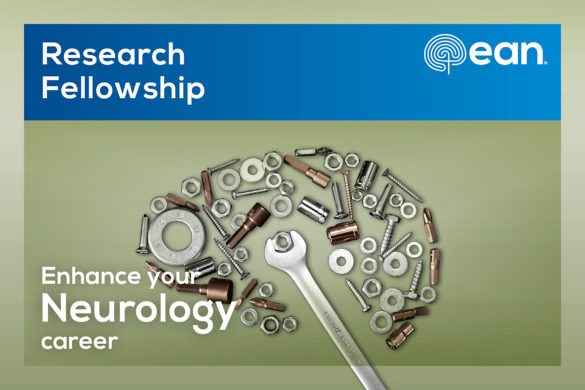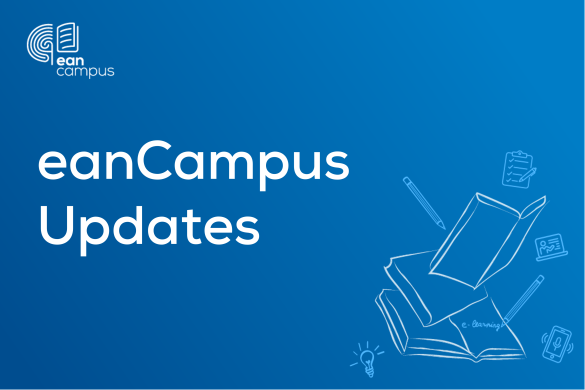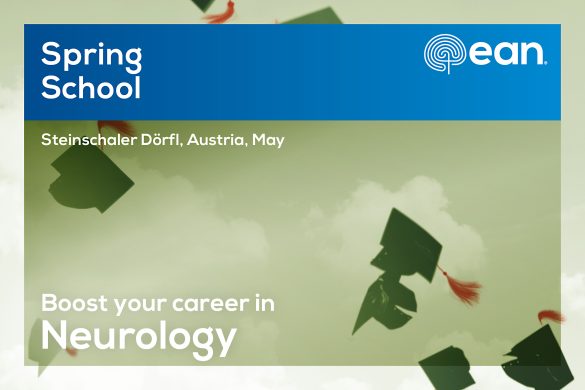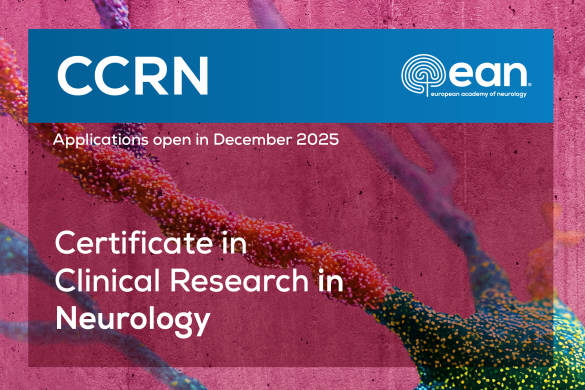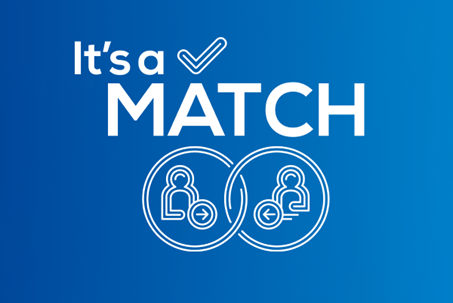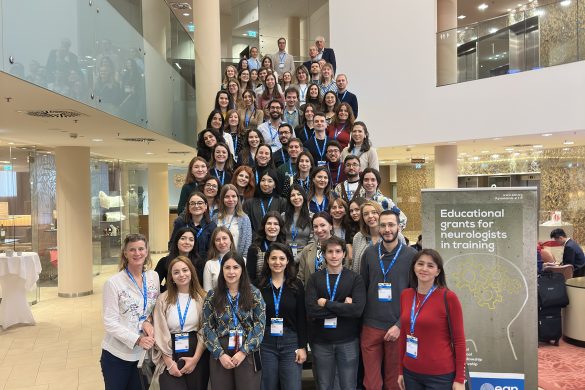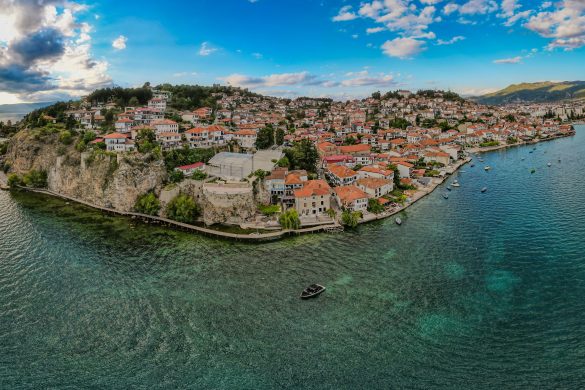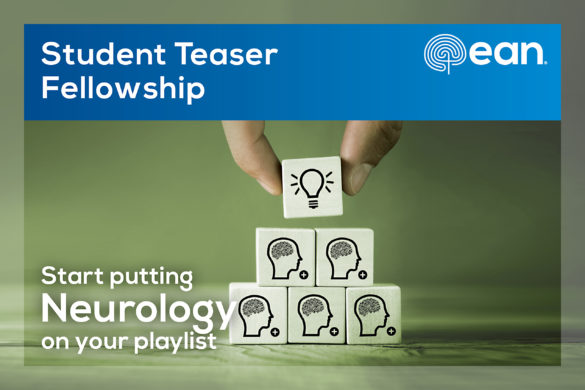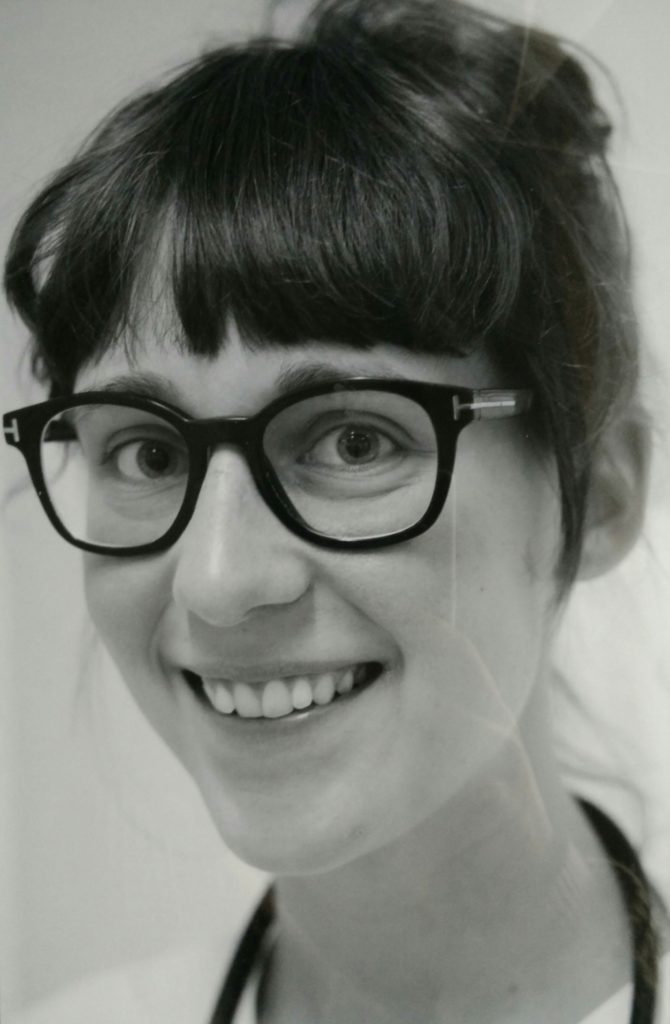
Isle Aya Peeters, Belgium
Term of the Fellowship: 2.1.-15.3.2020
Hosting department: Department of Neurology, Movement disorders group, Salpêtriere University Hospital, Paris, France
Supervisor:Prof. Marie Vidailhet
Unfortunately, this fellowship was only of 6 weeks duration instead of 4 months due to the Covid-19 outbreak. Despite this shorter stay, we managed to achieve several goals.
The biggest goal for me was to improve my semiological skills in movement disorders. I’ve seen a lot of patients at the outpatient clinic together with my tutor professor Marie Vidailhet and other movement disorder specialists, who are very focused to a good semiological evaluation and who have excellent teaching capabilities.
I’ve certainly improved my approach to more common movement disorders, such as Parkinson’s disease, Tremor and atypical parkinsonian syndromes.
Moreover, I’ve had the chance to see a lot of patients with dystonia, a disorder I got rarely to see in my previous internships.
After seeing a particular pathology, I was frequently advised what to read in the literature about the subject which improved a lot my knowledge about the basics but also more rare disorders such as genetic and metabolic diseases.
My second goal was to learn about treatment options with botulinum toxin for movement disorders and being able to perform injections independently by the end of my training. I’ve had the opportunity to be several times at the hospital’s botulinum clinic, and I’ve seen a lot of different pathologies needing botulinum toxin (eg. hemifacial spasm, blepharospasm, cervical dystonia,…). I was taught how to approach these disorders with or without electromyography while injecting the toxin.
The internship was too short in duration to learn the subtleties of more advanced techniques like deep brain stimulation (DBS). Nevertheless, I’ve seen a lot of hospitalised patients with a DBS for their check-up and I’ve had the opportunity to attend a DBS meeting where different candidates for DBS are multidisciplinary discussed.
Besides these ‘planned’ goals, I had the opportunity to see a lot of patients with an apomorfine pump at the ward rounds, I attended a multidisciplinary meeting for difficult cases in a pediatric movement disorder clinic, and I had the chance to present at the national meeting called ‘Club des mouvements anormaux’ where I was rewarded with the prize for the best presentation.
Overall, I have had a very positive experience in Paris. I was warmly welcomed, I was stimulated to learn and the team consists of very skilled people with good teaching capabilities. The only negative point is the duration of the internship which was too short due to circumstances as mentioned before. I would definitely recommend this internship to residents who want to improve their knowledge and skills in movement disorders.
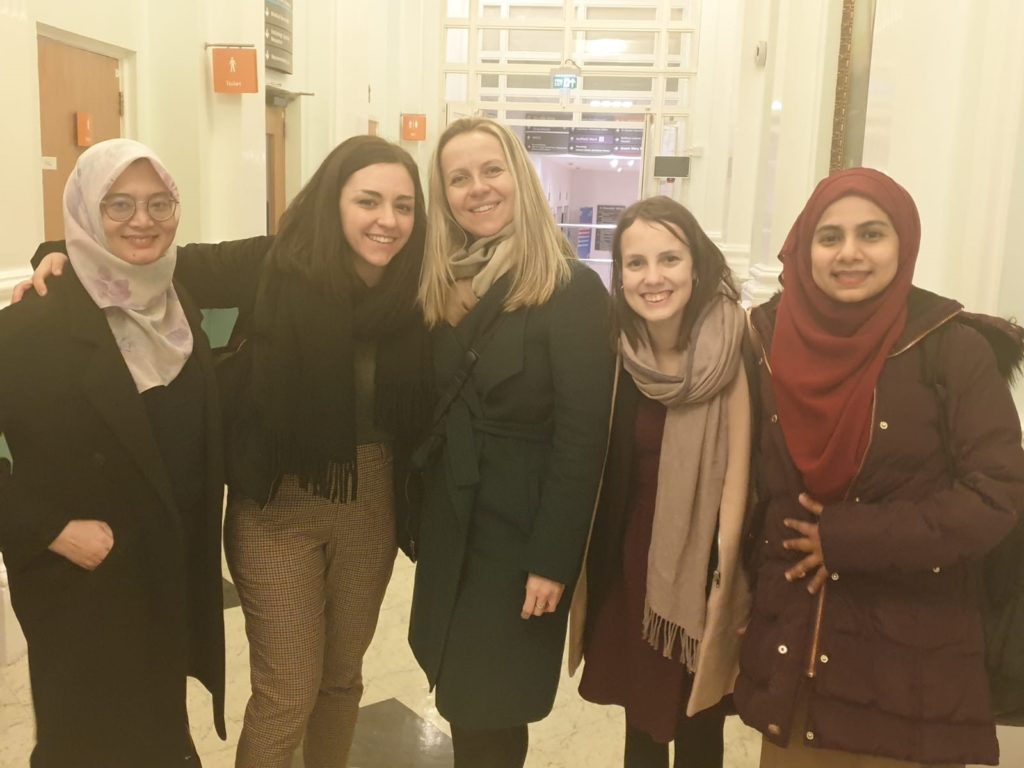
Fátima Vanessa Santos Carvalho, Portugal
Term of the Fellowship: 6.1.-13.3.2020
Hosting department: Department of Clinical and Movement Neurosciences, UCL Queen Square Institute of Neurology, London, United Kingdom
Supervisor: Prof. Kailash Bhatia
I did a 10 weeks fellowship at the National Hospital for Neurology and Neurosurgery in London. Here I attended Professor Kailash Bhatia‘s clinics in movement disorders.
During my fellowship I was able to increase my knowledge on both hypo and hyperkinetic movement disorders, and was able to learn the diagnostic approach, from phenomenology, to syndrome and finally the clinical diagnosis. After each visit, Professor Bhatia always discussed the patient with us, highlighting the learning points in each case, even the ones that, at first, seemed more common and simple. He motivated us to use logic but also to “think outside the box” as clinicians, and we always learned everything new every day. Furthermore, I was able to observe both sporadic and genetic disorders, and often very rare conditions and very complex patients. I was able not only to discuss the clinical presentation but also the explanation of the disorder to the patient and the therapeutic plan, often including pharmacological and non-pharmacological treatments.
I was also able to attend the botulinum toxin clinic on a regular basis. I increased my knowledge not only about the proprieties of the botulinum toxin itself (pharmacokinetics, side effects, drug resistance), but I also learn the approach to a patient referred to this type of clinic: which muscles are involved in the different dystonic positions, which muscles to inject to improve the patients symptoms, with which dosage to start, which areas to avoid in order to minimize side effects.
Every other week we followed Professor Bhatia to the ward, where he provided guidance on the diagnostic work-up and treatment of inpatients in the Neurology ward.
Also, at the National Hospital for Neurology and Neurosurgery, every week, we attended case presentations organized by the different teams, where a patient was invited to attend, and the audience would discuss the clinical history, the differential diagnosis and the ancillary tests required to reach the final diagnosis.
Unfortunately, due to the current pandemic, I had to leave sooner than planned, as I intended to stay for 10 more weeks. However, I truly feel I learned a lot and understood how much I have yet to work in order to improve myself as a clinician for the future.
I would like to thank Professor Bhatia for his kindness and for all he taught me, and also all the amazing fellows and observers I meet there, hoping we can meet and continue to collaborate in the near future. Finally, I would like to thank EAN for making this experience possible for me.




